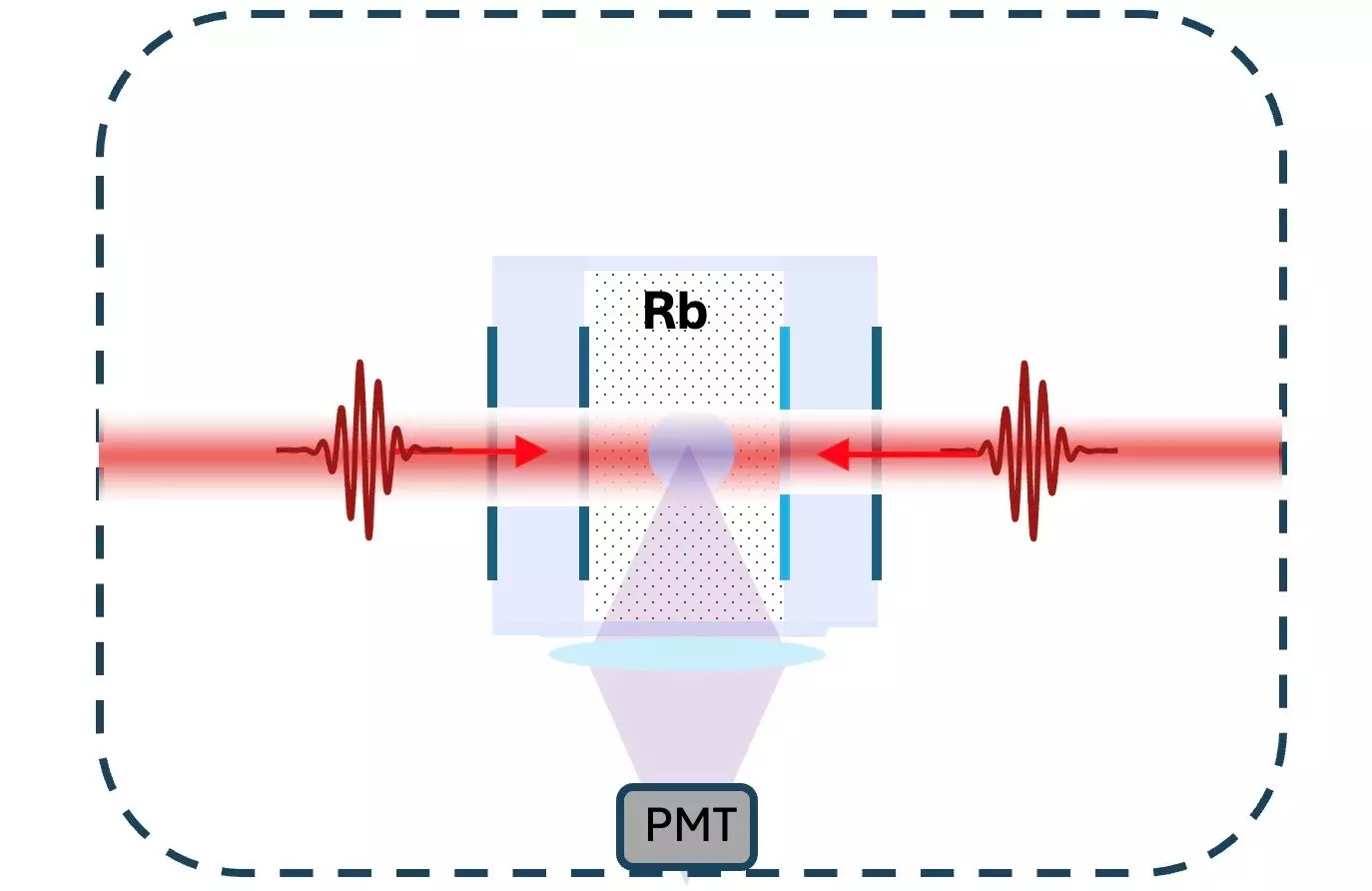Technology often evolves to meet the demands of its practicality, and the realm of atomic clocks is no exception. Recent research led by Jason Jones from the University of Arizona has highlighted a transformational breakthrough in optical atomic clock technology. By employing a single laser and eliminating the need for cryogenic conditions, this innovative approach not only simplifies the architecture of atomic clocks but also enhances their portability. This shift signifies a monumental leap from the traditional multi-laser setups that have dominated the field, quite literally bringing precision timekeeping to our fingertips.
Over the past two decades, the development of increasingly sophisticated atomic clocks has propelled the accuracy and reliability of time measurement. Jones notes the disconnection that often exists between advanced technologies and their practical applications. The intricate designs and extreme cooling requirements of existing systems have thus far limited their deployment outside research settings. However, by leveraging a single frequency comb laser—functioning as both the clock’s driving mechanism and timekeeping apparatus—this new clock design promises to bridge that substantial gap.
Central to the operation of this novel optical clock is the frequency comb—a laser technology that emits numerous evenly spaced frequencies, creating a broad spectrum of light. In their research published in the journal Optics Letters, Jones and his colleagues have demonstrated how these frequency combs can directly excite two-photon transitions in rubidium-87 atoms, achieving performance metrics on par with traditional clocks that utilize dual lasers.
The core principle of this new clock design involves exciting atoms to higher energy levels within rubidium-87. Unlike existing designs employing single-photon transitions that necessitate extremely low temperatures to minimize atomic motion, this design allows for the use of hotter atoms. By sending photons from opposing directions, the motion-induced frequency variations cancel each other out. This clever methodology enables the clock to operate efficiently at a considerably higher temperature of approximately 100°C, marking a significant departure from conventional practices.
The introduction of this optical atomic clock paves the way for a host of applications that could fundamentally alter how we interact with timekeeping technologies. For one, the enhancements in GPS networks—which heavily rely on satellite-based atomic clocks—could see marked improvements in precision and reliability due to more accessible and efficient backup or alternative clock systems. As pointed out by Seth Erickson, the paper’s first author, the implications extend beyond just navigation; they may also revolutionize telecommunications. With the ability for efficient switching among multiple simultaneous communications over the same channels, this optical clock could significantly elevate data transmission rates.
The mechanics of the clock involve a nuanced understanding of atomic energy levels and their interactions with different photon wavelengths. Jones emphasizes how the innovation lies in pairing photons from a frequency comb, which allows the clock to effectively replicate the single-photon excitation of traditional lights while avoiding the drawbacks associated with using a single-color laser. This simplifies the entire design, making it far more amenable to practical utility.
The researchers’ findings suggest a robust potential for the direct frequency comb methodology in the wider field of atomic clock development. They have already demonstrated the viability of this innovative design through comparative analysis with traditional atomic clocks, revealing instabilities analogous to those found in existing technologies. Nevertheless, the commitment to refining their optical atomic clock doesn’t end here.
There are ongoing efforts to miniaturize the design further and improve its long-term stability, which is crucial for everyday applications. As the research team looks ahead, they envision a broader applicability of the frequency comb approach across various atomic transitions. This could even facilitate the development of clocks that do not depend on low-noise single-frequency lasers, broadening the scope of atomic clock usage in industries and consumer products alike.
With these advancements in optical atomic clock technology, the landscape of timekeeping stands on the brink of a significant transformation. The ability to create high-performance, compact, and portable atomic clocks represents a disruptive shift that could enhance numerous sectors, from telecommunications to navigation. As scientists and engineers continue to push the boundaries, we may soon find ourselves amidst a new era where precision timekeeping seamlessly integrates into everyday life. As technology evolves, so too will our relationship with time, potentially redefining how we measure and perceive it.

